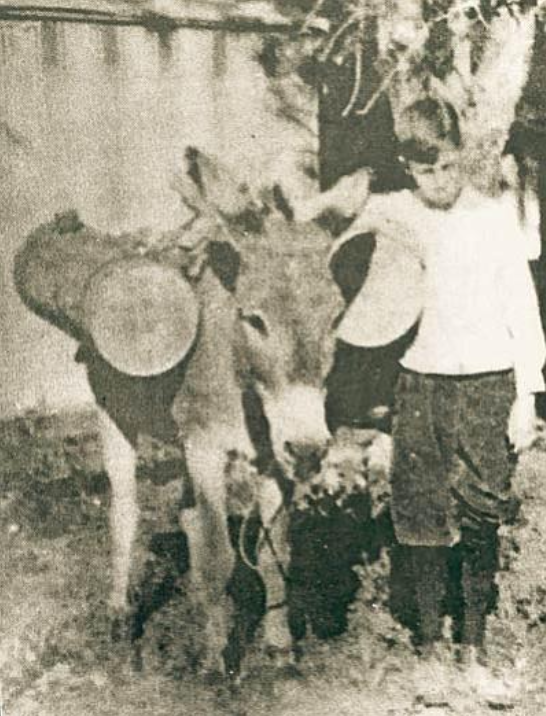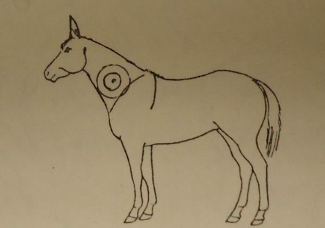Burros (the Spanish word for ‘donkeys’) were first introduced to the United States by Spanish conquistadors. In 1869, they were deposited in the Grand Canyon by gold-seekers whose use for them was ephemeral.
On top of the existing human-caused ecosystem imbalances in Grand Canyon National Park, the burros’ existence wreaked ecological havoc. Burros threatened native species by decimating vegetation and monopolizing water supply. Even still, the National Park Service (NPS) experienced fierce pushback to their attempts to eradicate the burros.

Why Remove Burros?
Burros are non-native to the United States, and although they are cute, have no place in the Grand Canyon. Sophie Preckler- Quisquater, an ecologist at University of California, Davis, enlightened her audience to the social and ecological dilemma represented by the Grand Canyon’s burros. In a recent talk, Preckler-Quisquater explained that burros consume the same resources as native species, creating dangerous shortages. Burros also degrade fragile top soils and cultural resources like petroglyphs. For a period of time in the late 1800s and early 1900s, burros’ predators were wiped out entirely due to excessive hunt, causing the population to exceed 2,000. This population burst was another spur for burro management and/or removal.
Some parties argue that removal of non- native species from a particular area has higher resource cost than ecological gain. However, the National Park Service regarded the burro problem as severe and planned to take action. In 1920, NPS called burros a “veritable pest” and reported that “the time is not far distant when radical steps will have to be taken to eliminate the burro evil” (NPS 1920:27). In 1976, the NPS responded to these conclusions by implementing a policy consisting of burro removal by “shooting, herding, or any means possible” in 1976.
Legislative and Public Pushback
The burro removal policy was considered cruel and unusual by many members of the public. This attitude was fueled by several pieces of legislation; the 1959 Hunting Wild Horses and Burros on Public Lands Act (Public Law 86-234) outlawed use of
motorized vehicles or aircrafts when capturing burros, and the 1971 Wild Free- Roaming Horse and Burro Act (Public Law 92-195) required protection of burros on public lands. The National Park Service was not subject to these laws, an exemption that fueled public outrage. Citizens wrote letters and signed petitions, efforts that succeeded in slowing the removal process.
Addressing the
Ecological Niche Argument
Some burro removal opponents argued that the burro was ecologically commensurate to a now extinct species with which it shared an ancestor, the African wild ass. They argued that the burro was filling an ecological niche left vacant by the extinction of this Pleistocene era species.
Preckler-Quisquater touched on this issue in her talk, offering novel evidence as to why the argument was invalid; in 2017, Dr. Peter Heintzman published a scientific paper in the journal eLIFE reporting that there was only one New World stilt-legged equine species during the middle to late Pleistocene. This indicates that stilt-legged creatures evolved independently both in the New and Old World, meaning the burro must not share an ancestor with the extinct species. Heintzman proposes a new genus, Haringtonhippus for the extinct species previously thought to belong to the Equus genus. Although unknown at the time, this evidence supports the ultimate decision which was to move forward with removal of burros from Grand Canyon National Park.
The Removal
After facing resilient objection by the public, the Department of the Interior proposed a Federal Burro Management and Ecosystem Restoration Plan and Final Environmental Statement. Central points of the proposal included the impact of burros on small mammals through resource destruction and impact on the native bighorn sheep through competition for vital resources.
In response to observed ecological impacts and consistent with NPS’ original removal plans, employees were instructed to remove burros by shooting them in the throat.

NPS left room in the proposal for a third party to benevolently remove the burros at their own will and expense. A nongovernmental organization, The Fund for Animals, conducted removal of live burros via aircraft. The cost of this humane removal option was >$1000 per burro. After the removal, NPS installed fencing along areas vulnerable to reintroduction of burros. In total, the removal process cost about $500,000.
Was the Burro Removal Successful?
Finally, the burro removal was declared a success. However, some people disagree with this declaration and see the project as a waste of time and money, caused in part by public lack of understanding of invasive species. Preckler-Quisquater believes that the NPS’ initial disregard for the public’s commitment to the well-being of burros exacerbated the project’s hold-ups. She also reported that new genomic techniques may help us avoid future disputes over genetic relationships, informing those determining whether an ecological niche should be filled by a modern species.
